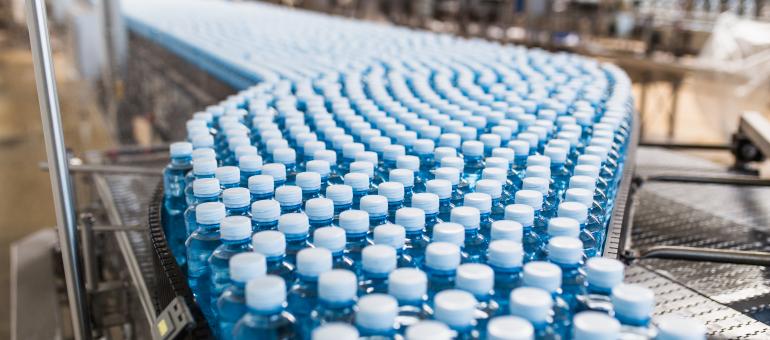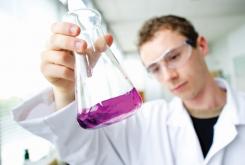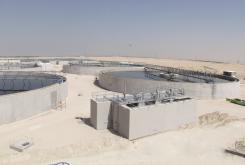How Bottlers Can Get Ahead of EPA Guidance on PFAS Limits

Typically, most consumers assume that drinking a bottled beverage is safe because it has been purified in some way and bottled in an FDA compliant facility. But when Johns Hopkins University researchers pulled bottled water off store shelves last year, there was cause for concern.
Nearly four in 10 bottles of water contained a family of chemicals known as per- and polyfluoroalkyl substances (PFAS), which are used to make a wide range of stain-resistant, water-resistant, and non-stick products. PFAS are present in food packaging, outdoor clothing, carpets, ski wax, certain types of firefighting foam, and more.
New tests and research have found that PFAS are more common in our water supplies than previously thought. In addition, they cannot easily break down or be eliminated — their carbon-fluorine structure is the strongest known chemistry bond, the reason they are known as "forever" chemicals.
In June, the EPA signaled future regulations when it issued new drinking water health advisories for PFAS and announced $1 billion in federal funding for states to address PFAS and other emerging contaminants in drinking water. It’s only a matter of time until the EPA goes beyond advisories and defines limits for PFAS in drinking water.
Manufacturing facilities, including food and beverage manufacturers, will be pressed to take action and should start preparing. We now know how PFAS moves through products, homes, drinking water, and wastewater, and manufacturers that take steps to evaluate and enhance their ability to mitigate PFAS will be a step ahead of future EPA action.
Evaluating the Risks
At one of our recent webinars, we found great interest in PFAS in food and beverage manufacturing, but not much knowledge or experience.
A survey of webinar attendees revealed that 69% of food and beverage professionals knew little or nothing about PFAS. Moreover, only 17% of those surveyed tested for PFAS at their food and beverage manufacturing facilities.
Those numbers could soon change as either public opinion or regulation leads to required testing and treatment of bottled water and other beverages. Getting ahead of such requirements and knowing your potential risks allows you to prepare for detecting PFAS in your water. It’s important to carefully evaluate whether to test for PFAS because once its presence is known, several additional steps must be taken to address it.
Known PFAS means you'll need decision criteria for PFAS disposal, an understanding of cost for transportation and disposal or destruction, the level of risk associated with future liability, or the need for additional equipment or operators.
What You Need to Know About PFAS Testing
There are more than 9,000 types of PFAS, a figure that continues to grow. Labs, however, are only analyzing up to 40 types of specific PFAS as technology catches up to discovery. Laboratories continue to develop and validate ways to analyze PFAS that lead to EPA standard methods, which are used for targeted or total analysis of PFAS.
A targeted analysis involves testing for a specific type of PFAS and determining whether it is present in the sample. If the result is above the reporting limit, the test will indicate how much of the targeted PFAS is present. Total PFAS surveys, which are costly and provide a fuller view of contamination, are becoming more common for water supplies and wastewater as concerns over potential contamination increase.
Because the number of recognizable PFAS is still somewhat limited, comparison studies between total analysis and targeted analysis of PFAS have identified the need to test for total PFAS. In the future, however, it may be prudent to test for total PFAS by measuring Total Organic Fluorine (TOF) and compare it with results from previous Targeted Analysis results. As testing capabilities for more types of PFAS become available, new methods will include additional common types of PFAS in the standard method. EPA PFAS testing should be reviewed for more details.
Another aspect of PFAS testing involves understanding lab facilities and their reported results. Concentration units common in PFAS include parts per trillion, parts per billion, and parts per million. Regulations are often stated in parts per trillion or parts per billion. Labs may have different standards and reporting limits depending on timing and analyte, so it’s vital to keep units of measurement straight.
Methods of PFAS Removal Depend on Context
If PFAS is detected in your water, you have several options for removal.
Bottling facilities are increasingly utilizing a multi-barrier approach, similar to the three purification steps, or barriers, in place at drinking water and wastewater facilities. If this approach is unfamiliar at your bottling facility, it's worth exploring how combining filtration steps to treat source water can achieve stricter quality control. Assessing this at an early stage enables a more efficient selection and implementation of filtration solutions.
Granulated activated carbon (GAC) and reverse osmosis (RO) membranes are common and effective solutions for PFAS removal. Still, it's important to understand how they work and how system designs can impact treatment efficiency, disposal options, and more. Since these technologies are so widely used, understanding feed PFAS, types of PFAS to be treated, and how they perform while new versus at the end of GAC media and RO membrane life helps update operating and maintenance decisions.
While PFAS regulations currently vary by state, the EPA is working on setting forth drinking water limits for PFAS in addition to existing health advisory limits. The emerging reality is that the PFAS environment is rapidly escalating and reducing the consumption of PFAS in drinking water is critical to reducing its overall presence in the air, rainwater, food, and elsewhere.
Solutions are never one size fits all. Veolia | Water Tech offers many ways for bottlers to get ahead of the race against PFAS. Learn more about PFAS treatment technology, remediation, and removal.







